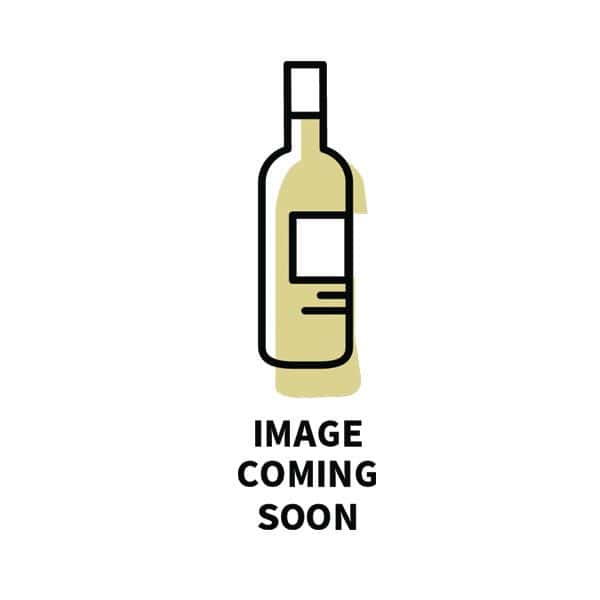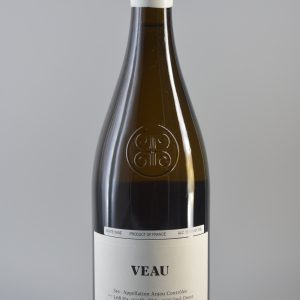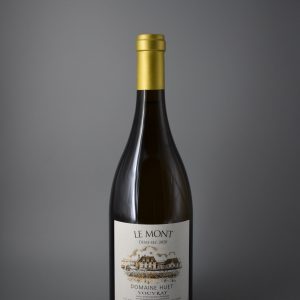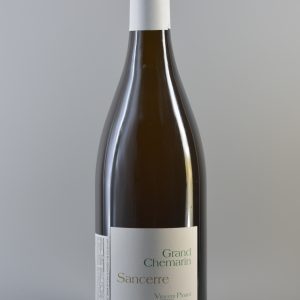
2019 Claude Riffault Sancerre Monoparcelle 469
CRITIC SCORE:
From a single, southeast-facing 0.35-hectare parcel in the lieu-dit Les Sentiers, where 52-year-old-vines root in very shallow (50 centimeters) Kimmeridgian soils, the 2019 Sancerre Monoparcelle 469 displays a fabulously complex, pure and terroir-driven bouquet of iodine and crushed limestones with fresh lemon and stony notes that I find highly exciting. Full-bodied, elegant and refined on the palate, with mealy tannins and lingering salinity and grip, this is a still extremely young but exciting Sancerre with finely grippy tannins. The 2019 was vinified for 18 months in larger oak vats. To be bottled in March 2021. Tasted as a sample in February 2021.
I didn’t taste wines from Stéphane Riffault for a long while, although I had them in very best memories. The 2016s and 2017s I tasted recently (far too late for potential buyers yet early enough for collectors who cellar them) are exciting. The 2017 Rosé is vinous and elegant, and among the whites, the clear, precise and linear 2016 Les Desmalets and the complex, structured 2016 Les Chailloux are outstanding. Shortly before the deadline for this report, I received the younger vintages—2018 and the fascinatingly vibrant and energetic 2019. These younger vintages include several new highlights, namely the single-parcel wines 468 and 538, which, tasted as barrel samples, are among the finest and most expressive Sancerres I have tasted in many years. The 2019 Les Chailloux is another highlight once again, as is the 2020 Rosé, which is more “a masquerade of a red wine,” as Riffault’s US importer, Jon-David Headrick, expresses it perfectly. All in all, the Domaine Claude Riffault has become one of my personal favorites of the AOP, and Stéphane’s style seems to be moving toward more textured wines, a result of the trend to use more oak. Stéphane’s brother is winemaker at the Domaine Étienne Sauzet in Puligny-Montrachet, and they might have an intense exchange about viticultural and winemaking techniques. I remember having tasted many wines grown predominantly or entirely in stainless steel years ago, and I also remember the transition to concrete vats and small barrels; these remain, but larger wooden casks are also in use today. For example, the generic white Sancerre is aged in both 500- and 600-liter wood containers; the Sancerres Les Boucauds is aged in a combination of pièces bourguignonnes (228 liters), 350-, 400- and 500-liter wood containers as well as 600-liter demi-muids. Les Chasseignes ages in both 350-liter barrels and a 20-hectolitre foudre that, in turn, is the cask for the fantastic Sancerres Les Denisottes and Les Chailloux. The Monoparcelles 469 and 538 are vinified in 350-liter barrels before the élevage of eight months takes place in a 20-hectoliter foudre and for another month in stainless steel tanks before bottling. The red Sancerre La Noue is aged in a combination of 228-, 250- and 600-liter oak vats, whereas the Sancerre Rosé is entirely aged in a single 228-liter pièce bourguignonne.
With his rosé, Stéphane Riffault is looking to break the stereotype image of rosé and to produce a great, gastronomic vin de rosé, which he describes as “serious” and makes it “like a clear red.” He accepts a loss of freshness in favor of complexity by aging it like a red Pinot Noir. In the end, this makes sense and adds another serious and vinous wine to a remarkable series of ambitious, terroir-driven Sancerres that are far more than just fresh and easy. I even had the impression the rosé is potent enough to be aged even longer on its lees, and Stéphane admits that he’s still unsure about this and that there is a possibility that he might age it longer than expected, but he’s afraid that what he would gain by aging it longer would be offset with an even further decrease in freshness. He added that bottling in March will give him a “happy medium,” but this is yet to be seen.
In an email conversation with Jon-David Headrick, who detected the Domaine Claude Riffault many years ago, he told me that Stéphane is not actively trying to make “wines that are counter to his appellation.” Instead, “he’s trying to push the boundaries as to what can be made in the appellation. For so long, Sancerre has been known as an appellation that produced simple, fresh wines, and he wants it to be known as one of the great terroirs of France, having the ability to produce ‘great white wines of stature and complexity.'” As such, Stéphane has been systematically tasting and speaking with great growers in Burgundy, Champagne, Alsace and Loire regions like Savennières to help him refine his style. “His primary references are in Burgundy where he has taken a lot of cues,” reports Headrick. However, he is quick to point out that “Stéphane is not trying to make a Burgundy wine in Sancerre and dislikes this terminology. He is, however, taking the best of the ideas that great domaines in Burgundy have to teach him and adapting those to Sauvignon Blanc, his appellation and his parcels. ”
One of the ways Riffault thinks he can produce great, gastronomic whites is to concentrate on extended lees aging. In fact, the “sur-lie” aging is much longer than it was before since “he believes that aging on the lees, and more lees, in wooden containers is one of the ways to achieve this.”
One could fear the power, richness and density of the 2019 vintage could have made the new wines from Stéphane Riffault too big, but in fact, he has mastered the challenge incredibly well and kept as much freshness as possible in his full-bodied, structured and sustainable wines while practicing this extended aging. In any case, you should use a big Burgundy glass for all of his wines, particularly for the 2019s—and let them breath enough air. I have the series over a week, and even after seven days, they deeply impressed me.
PAIRS WITH:



$52.99/bottle
Regional Information About This Wine:
Lorem ipsum dolor sit amet, cu dicant praesent cum, id regione alienum quo, ei mollis admodum vix. Ut partiendo mediocritatem usu, id saepe facilis nec. No errem omnesque accommodare mea, vim et detracto senserit qualisque. Sit aperiri menandri definitionem at. Vel aliquam legimus ne.
Ex vix summo convenire, mei ad labores iracundia appellantur. In mel virtute scaevola, velit iriure postulant nam eu, docendi lucilius elaboraret quo ei. Ad mei putent doctus maluisset, ut epicuri patrioque sed. Mel te dicam adolescens.
Lorem ipsum dolor sit amet, cu dicant praesent cum, id regione alienum quo, ei mollis admodum vix. Ut partiendo mediocritatem usu, id saepe facilis nec. No errem omnesque accommodare mea, vim et detracto senserit qualisque. Sit aperiri menandri definitionem at. Vel aliquam legimus ne.
Ex vix summo convenire, mei ad labores iracundia appellantur. In mel virtute scaevola, velit iriure postulant nam eu, docendi lucilius elaboraret quo ei. Ad mei putent doctus maluisset, ut epicuri patrioque sed. Mel te dicam adolescens.
Lorem ipsum dolor sit amet, cu dicant praesent cum, id regione alienum quo, ei mollis admodum vix. Ut partiendo mediocritatem usu, id saepe facilis nec. No errem omnesque accommodare mea, vim et detracto senserit qualisque. Sit aperiri menandri definitionem at. Vel aliquam legimus ne.
Ex vix summo convenire, mei ad labores iracundia appellantur. In mel virtute scaevola, velit iriure postulant nam eu, docendi lucilius elaboraret quo ei. Ad mei putent doctus maluisset, ut epicuri patrioque sed. Mel te dicam adolescens.
Lorem ipsum dolor sit amet, cu dicant praesent cum, id regione alienum quo, ei mollis admodum vix. Ut partiendo mediocritatem usu, id saepe facilis nec. No errem omnesque accommodare mea, vim et detracto senserit qualisque. Sit aperiri menandri definitionem at. Vel aliquam legimus ne.
Ex vix summo convenire, mei ad labores iracundia appellantur. In mel virtute scaevola, velit iriure postulant nam eu, docendi lucilius elaboraret quo ei. Ad mei putent doctus maluisset, ut epicuri patrioque sed. Mel te dicam adolescens.





Reviews
There are no reviews yet.